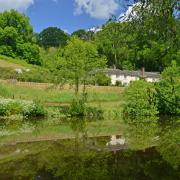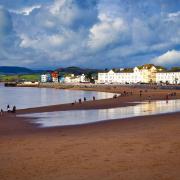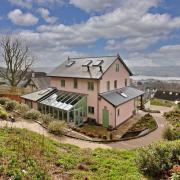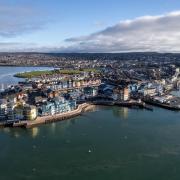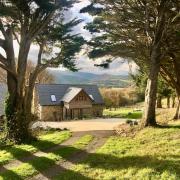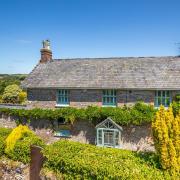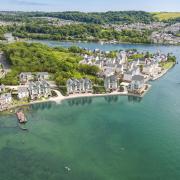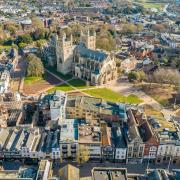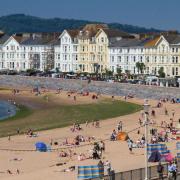You’ll be surrounded by raw natural beauty on this undulating walk

This year will go down in history as the year the world stopped. The year flight paths vanished, motorways emptied, streets fell silent – if only for a few bewildering, yet in some ways paradoxically liberating weeks, where many of the demands of ‘normal’ life were put on hold.
And in that bizarre, altered state of reality, huge numbers of people discovered the simple solace of walking, not to get anywhere, but just to walk. In the depths of lockdown, that one hour of sanctioned exercise became a metaphorical life support system – at least for the healthy and fortunate.
Like so many others, I’ve never felt more grateful to live in Devon with its endless, glorious miles of stomping ground. I’ve long been an avid and evangelical walker and a global health crisis only reinforced this.
Because as mundane as it may sound, there is no exercise as gentle yet as effective, as invigorating yet as soothing, as putting one foot in front of the other. Studies consistently show that regular walking is one of the best ways to look after our health, lowering the risk of all sorts of chronic conditions: heart disease, cancer, diabetes, depression and even dementia.

Quite simply, the longer we walk, the longer we are likely to live. Injuries are rare (especially compared to running) and it boosts our fitness levels without placing our bodies under undue stress – and it’s free.
What’s more, walking has the extraordinary power to lift our mood and increase feelings of wellbeing. Simply getting outside and moving provides a tremendous antidote to stress, releasing us from the kind of low level claustrophobia and ticking anxiety that can arise from spending too long indoors, especially during a pandemic, and replacing it with something more like inner peace.
Wherever you live in Devon, the chances are you’re never more than a boot’s throw away from a foothpath, trail or beach, somewhere you can blow away the cobwebs. Perhaps most breathtaking of all though is the South West Coast Path – England’s longest national trail. Starting in Minehead in Somerset, the path meanders into Devon, hugging exquisite coastline and precipitous cliffs, before delving into Cornwall, rounding the map at Land’s End, and eventually winding up in Dorset again, finishing at Poole Harbour, 630 miles later. Although there are, of course, plenty of shorter options if you don’t have the time or energy to tackle the whole thing in one go.
In North Devon, a popular starting point – not least because there’s a car park - is Seafield House (aka the Haunted House) in Westward Ho! It’s from here that I set off with three children in tow, a salty breeze in the air and a rucksack full of sugary snacks on my back.

The first mile takes us to Cornborough Cliffs with sweeping views across the Bristol Channel, punctuated by the steadfast presence of Lundy Island. Heading south, the path drops down almost to sea level to Abbotsham Cliffs, where we pause briefly to take in the expanse of age-old rocks sloping into an infinite sea.
Further ahead, we can just make out white specks of houses, pressed into the cliff face of the fishing village of Clovelly, ten undulating miles away. However, with proceedings soon interrupted by the inevitable ‘I’m hungry’ it seems unlikely we’ll walk that far today. I direct the children to the blackberry-studded hedgerows in an effort to ration the snacks, but the effect is short-lived. Biscuits are required.
Refuelled, we press on past Greencliff – which is like Abbotsham cliff, only higher and greener. With the car park now well out of sight, there’s an increasing sense of isolation as the terrain becomes more uneven and the scenery takes on a wilder note. A red kite hangs motionless in the air, bees dance among the multitude of wildflowers and crickets serenade us from the undergrowth.
The inclines are sometimes brutal and unexpected, but the rewards are equally as intense – that sense of walking right along the edge of the map, where land meets sea in all its rugged glory, where swallows dive and nature reigns and cliffs rise up like mountains. Blue to our right, green to our left and only us in between. Surrounded by raw, natural beauty, all feels well with the world.

Clovelly though, seems elusively far ahead and with a diminishing snack supply and small legs beginning to ache, we decide to veer off the path at Peppercombe. After all, nothing spoils a good walk like tired children and I don’t want to put them off an activity I hope they’ll enjoy for life, by pushing them too far.
So we scramble down to the secluded, rocky beach, flanked by striking red cliffs. There isn’t another soul in sight; just us and a few bobbing razorbills, and I’m reminded how lucky we are to have all this within walking distance.
Shoes are abandoned in favour of a dip and I know this will be as far as we’ll get (well apart from the five-mile-or-so return journey.) One day I will walk all 630 miles, but not today. Today the path will take us home.
Did you know?
The entire South West Coast Path is 630 miles long, including 90 miles in North Devon and 115 miles in south Devon.
The path originated in the 19th century and was used by coastguards patrolling for smugglers.
Most people take seven or eight weeks to walk the entire path, but a fast walker can complete it in around 30 days.
Dogs are permitted on the whole Coast Path, as long as they don’t disturb livestock and wildlife or cause a nuisance to other walkers.
Have you joined the Devon Life Facebook page yet?




